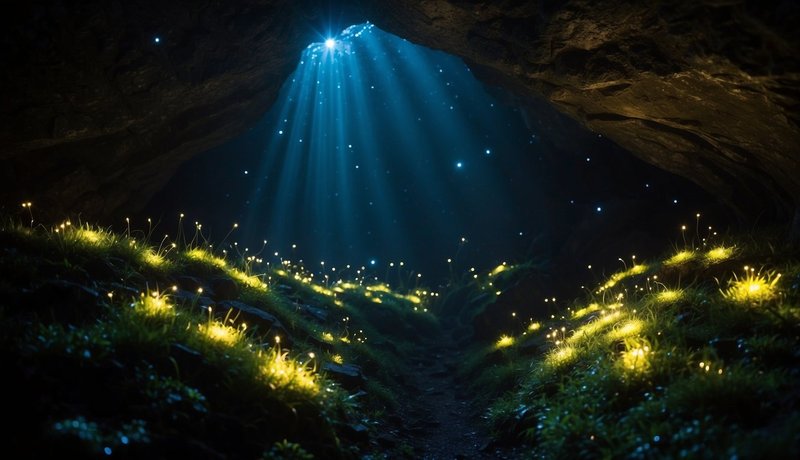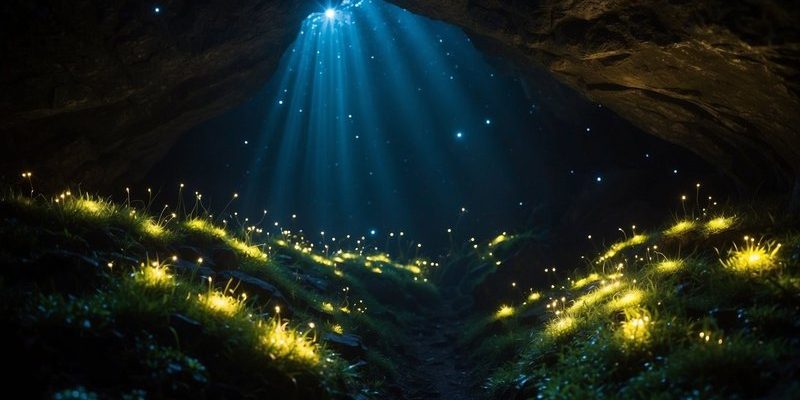
Protecting these tiny lights is crucial, not just for their survival but also for maintaining the balance in their ecosystems. You might be wondering what you can do to help, or even what challenges these creatures face. Let’s dive deeper into the world of glow worms, their habitats, and why conserving them is vital for our environment.
What Are Glow Worms?
To start, let’s clear up a common misconception: glow worms aren’t necessarily worms! They’re actually the larval stage of beetles from the *Lampyridae* family, commonly known as fireflies or lightning bugs. These tiny critters produce bioluminescent light, primarily to attract mates and lure prey. Think of them as nature’s neon lights where, instead of a buzzing nightlife, we have a serene glow lighting up dark corners.
Glow worms are typically found in caves, forests, and areas with plenty of moisture. Their luminescence is fascinating; it’s a chemical reaction in their bodies that creates light without generating heat, a process called *bioluminescence*. Just imagine the wonder of walking into a cave and seeing thousands of these little lights twinkling like a starry sky. It’s almost magical, isn’t it?
These creatures have a specific set of needs to thrive. They prefer dark, humid environments since light pollution can disrupt their mating patterns and small ecosystems. As predators, their larvae use silk threads to capture other insects, creating a unique dynamic in their habitat.
Why Are Glow Worms Important?
Glow worms are more than just pretty lights; they play essential roles in their ecosystems. First, they help control insect populations by preying on other bugs. This natural pest control keeps ecological systems balanced, ensuring that no single species dominates.
Second, by providing food for various animals, glow worms contribute to the food web. Birds, bats, and other nighttime predators rely on these glowing larvae as a food source. Losing glow worms would ripple through the ecosystem, affecting everything from small insects to larger mammals that depend on the food chain.
Finally, glow worms also offer insights into environmental health. Since they are sensitive to changes in their surroundings, their populations can indicate shifts in habitat quality. Monitoring glow worm populations is a way to assess the health of their ecosystems.
Threats to Glow Worm Habitats
Despite their importance, glow worms are facing numerous threats. Habitat destruction is one of the biggest issues. Urban sprawl, deforestation, and agricultural expansion can lead to the loss of dark, damp habitats that glow worms depend on. Imagine how hard it would be for these creatures to thrive in a concrete jungle.
Light pollution is another significant threat. Glowing street lamps and bright signs interfere with the natural darkness that glow worms need. Their mating rituals depend on their bioluminescence to attract partners, but with excessive artificial light, this becomes challenging. You might think, “It’s just a little light,” but for a glow worm, it can be a deal-breaker.
Climate change is also impacting their habitats. Rising temperatures and changing rainfall patterns can alter the delicate balance they rely on. As their preferred environments change, glow worms struggle to adapt, making conservation even more critical.
Efforts in Glow Worm Conservation
Around the world, numerous efforts aim to conserve glow worm populations and their habitats. Many organizations are working to create awareness about the importance of protecting these enchanting creatures. Local initiatives often focus on habitat restoration, like replanting native vegetation to restore areas that have been degraded.
Education plays a vital role too. Many conservation groups organize community events, workshops, and outreach programs to inform people about the significance of glow worms and their ecosystems. By growing awareness, they aim to inspire more individuals to participate in conservation efforts.
Additionally, researchers are conducting studies to better understand glow worm behavior, habitat needs, and population dynamics. This scientific knowledge helps shape effective conservation strategies. After all, the more we learn about glow worms, the better we can protect them.
What You Can Do to Help Glow Worm Conservation
You might be thinking, “What can I do to help?” Here are a few simple yet impactful ways you can contribute to glow worm conservation:
- Reduce Light Pollution: In your own backyard, try to avoid unnecessary outdoor lighting. Use shields and timers for lights to minimize their impact on local wildlife.
- Support Conservation Groups: Donate or volunteer with local organizations focused on protecting glow worms and their habitats. Your time and resources can make a big difference.
- Educate Others: Share what you learn about glow worms with friends and family. The more people know, the more they can contribute to conservation efforts.
- Promote Eco-Friendly Practices: Support sustainable farming and land-use practices to help protect natural habitats from destruction.
Every little action counts, and together we can create a brighter future for glow worms.
Glow worms represent a delicate balance in nature, and conserving their habitats is crucial to ensuring that they continue to light up our worlds. While they face significant threats, many people are passionate about protecting these beautiful creatures. By understanding their needs and the challenges they face, we can all be part of the solution.
As you ponder the next time you gaze into the darkness, remember the tiny glow worms hidden within. Every effort you make to protect their habitats helps keep that magic alive for generations to come. Together, we can ensure that the gentle glow of these fascinating creatures doesn’t fade from our planet.

